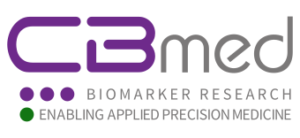Electrochemical Biomarker Detection in Common Metabolic Disorders
Metabolic control is of utmost importance for a number of metabolic diseases such as diabetes mellitus. With millions of people worldwide suffering from diabetes mellitus type 1 or type 2, these diseases are among the largest threats for the health care system. They decrease an individual’s life expectancy by ten years on average. Besides, diabetes mellitus is not only a financial burden, but also a personal and emotional one and is far from being fully understood. For patients who rely on metabolic control, which is of utmost importance in healthcare, CBmed is currently developing new approaches to biomarker detection: electrochemical sensor development.
Nowadays, sensors are gaining much of attention, in particular, electrochemical detection is an umbrella term for many different methods, which can be miniaturize A good example is one of the most frequently used sensors in the daily lives of thousands of people: the glucose sensor. It is important for patients with diabetes mellitus to perfectly dose their insulin. However, blood glucose level determination can only provide us a general diagnosis, which tells you that you have diabetes. But, we also need to understand that diabetes is not just diabetes. There are different kinds of diabetes as well e.g. type 1 and type 2 diabetes. Nowadays, insulin is the most commonly used biomarker as an indicator of the beta cell function, however, one of the disadvantage of insulin is that once a patient is taking insulin injection, the problem arises, wherein endogeneous and exogeneous insulin cannot be differentiated. This situation might lead to a misdiagnosis and wrong treatment plan.
Platform for biomarker research
To address this issue, CBmed provides a platform for biomarker research and together with Infineon technologies, a well know semi-conductor company, we aim to develop a portable sensing device to rapidly detect specific biomarkers related to common metabolic disorders, which is mainly found in the urine.
In this blog, we want tot give you a little overview on how this device has been developed. The method used is based on antigen-antibody interactions that is specific to our biomarker of interest. This reaction happens on the electrode surface, acting as the transducer element. This biological reaction will be then converted into an electrical signal. A end user device such as smart phone will read this signal, which is proportional to the concentration of the biomarker of interest.
The current development aims for a low-cost device which looks similar to a urinary cup. At the bottom will be an electrode, which can be bought at a pharmacy. After the urine gets collected in the cup, it can be put on a smartphone which does the data transfer using Near Field Communication (NFC). Within minutes, without the need of external hardware or a hospital, the measurement could be done anywhere – a fast, reliable, cost effective and accessible method for biomarker detection.
This device will be used in point of care setting design for simple handling by the end users. Therefore, it would be suitable to use either in clinical setting or non clinical setting and even in remote areas. This will also help clinicians for easier patients diagnosis and to closely monitor and control their patients. Especially to provide an immediate plan on their treatment options is of high importance.
The aim is the development of a portable sensing device to rapidly detect specific biomarkers related to common metabolic disorders, which is mainly found in the urine.
Various fields of application
So far, CBmed has already established a proof of concept for the detection of a wide range of concentrations of our target of interest. Though it should be mentioned that the electrochemical detection of proteins in urine is complex and still challenging. Therefore, further optimization of the developed sensor is still ongoing.
To create an intermediate non-invasive surrogate biomarker for various applications, urinary proteins have to be investigated outside the actual laboratory- and hospital-bound methods, which involves patients at their homes. A number of potential biomarkers using a stable device for various measurements in patients e.g. at risk for diabetic nephropathy will be established via this technology in the future.
A list of potential biomarkers has already been developed. They should be used in a multiplex approach on the sensor for clinical predictions from urine. besides the main focus on Diabetes detection and monitoring, there are other fields CBmed is interested in. For instance, one is Polycystic ovary syndrome. With 10-20% of women worldwide affected, it is the most common endocrine disorder. Characterisation of glucose metabolism in these women in combination with other endocrine parameters is crucial and a potential new field for POC (Point Of Care) devices. Besides, recent findings of new biomarker in preclampsia make it possible to develop an early and tight monitoring helping the mother and her unborn child.
There are many other fields where fast reliable electrochemical biomarker detection is needed, ranging from checking the menstrual cycle in the context of unfulfilled child-wish, muscle parameters for professional athletes or monitoring the drug level during therapy. Therefore, the next goal is to integrate this chip in a multiplex approach for clinical predictions from urine.
The Authors
Christoph HAUDUM
Project Lead
Electrochemical Biomarker Detection
Sharmaine REINTAR
Researcher
Electrochemical Biomarker Detection





 CBmed
CBmed